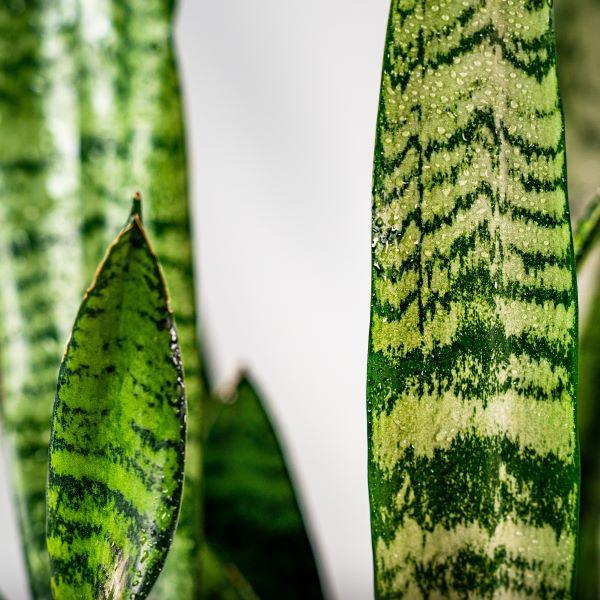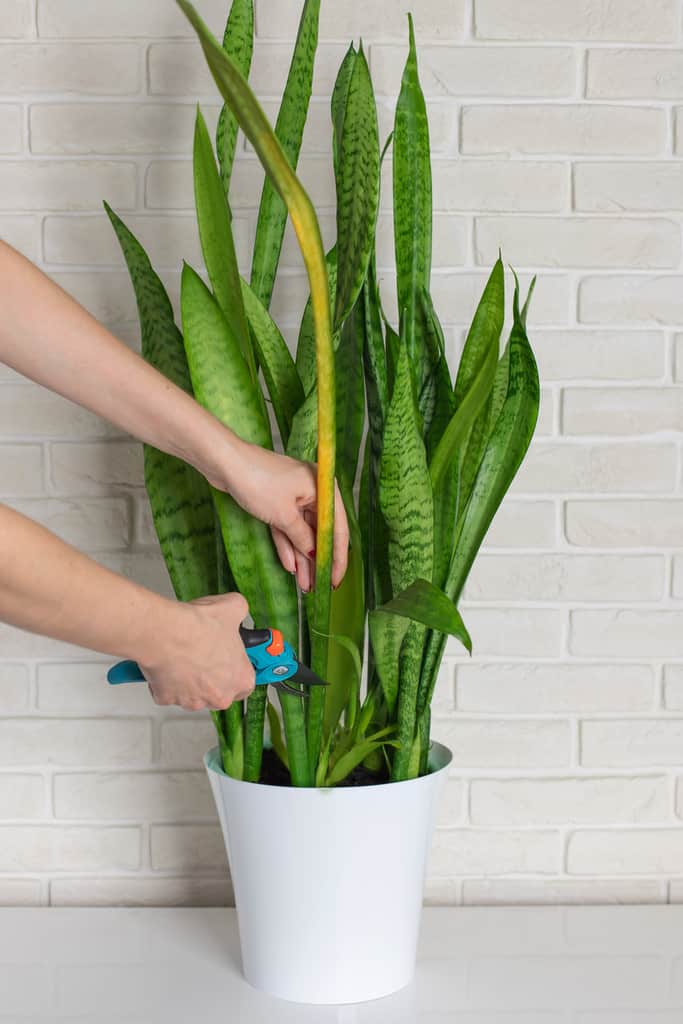Snake Plant Leaves Turning Yellow for Dummies
Wiki Article
Some Ideas on Snake Plant Leaves Turning Yellow You Should Know
Table of ContentsSome Ideas on Snake Plant Leaves Turning Yellow You Should KnowThe smart Trick of Snake Plant Leaves Turning Yellow That Nobody is DiscussingThe 25-Second Trick For Snake Plant Leaves Turning YellowThe Best Guide To Snake Plant Leaves Turning YellowThe Best Strategy To Use For Snake Plant Leaves Turning YellowThe 10-Minute Rule for Snake Plant Leaves Turning Yellow

Ideally, you need to add a liquid plant food to the plant's water. It is better to give serpent plants also little fertilizer rather than also much.
This is only required when the plants are entirely rooted through, if the rhizomes press one an additional up out of the soil or grow over the edge of the pot. Some fallen leaves might fall away over the sides on high houseplants as the rhizome is not adequately secured in the soil.

The Best Strategy To Use For Snake Plant Leaves Turning Yellow
One especially quite variant of the easy-care home plant is the fan snake plant (Sansevieria zeylanica). Propagating snake plants The green-leaved snake plant can be very easily propagated in the springtime or summer season via cuttings about 1.You need to keep in mind when propagating the snake plant which reduced edge belongs at the top and which at the base! Only after that must the leafed pieces be planted in wet substrate.
Shorten the fallen leaves of long-leafed ranges by regarding fifty percent to make sure that the plant is steady in the pot. With rosette-shaped growing Sansevieria, the specific rosettes are carefully separated from each other to ensure that each one has a couple of roots. The items are planted individually in blossom pots. Diseases and Parasites The snake plant is a very durable plant despite having modest treatment and in sub-optimal conditions; it also forgives major treatment errors.
Brown tinted or limp fallen leaves are typically caused by origin rot, waterlogging or temperatures that are as well reduced. The most regular pests on snake plants are mealybugs.
Snake Plant Leaves Turning Yellow - The Facts
Sansevieria, Mother-in-Law's Tongue, Viper's Bowstring Hemp. There are several kinds of Snake plant which all require the same care: Snake plant moonshine Snake plant Victoria Snake Plants can live in low light to bright, straight sunlight (Snake Plant Leaves Turning Yellow). They're the excellent plant to bring life to a dark area or edgeThroughout the wintertime months do not hesitate to just sprinkle your serpent plant as soon as a month if the dirt is still damp after 2 weeks. Snake Plants do not have any particular moisture needs yet they like drier atmospheres. Snake Plants do not have any certain temperature level demands, however will suffer if based on temperature levels below 10C.
Continued Its slow growth price makes it relatively unusual in the trade. There are 2 almost identical types, among which is'Nelsonii'.'Nelsonii 'propagates true to type from leaf cuttings while the various other kind, additionally offered as'Nelsonii', should be propagated by root division because fallen leave cuttings generate S. trifasciata.
Gathering bed-grown sansevieria is a careful thinning process. Solitary rosettes of desired dimension are cut from the staying clump by hand with a weeding blade or comparable cutting device, and raised from the bed. Completely efficient beds are gathered 5 to 6 times per year to avoid crowding of young plants which misshapes new rosettes.
Not known Details About Snake Plant Leaves Turning Yellow
Sandy field dirts used for ground beds ought to be modified with 15 to 20 percent peat incorporated right into the top 4 inches to improve water holding and cation exchange Our site capability. The p, H of the majority of sandy ground beds in central Florida varieties in between 5. 5 and 6. 8. Research has revealed that S.29 extra pound per plant. Nonvariegated plants are generally a lot more effective than variegated cultivars of the same types. Some baby rooms expand tiny plants from leaf cuttings in either ground beds or increased benches - Snake Plant Leaves Turning Yellow. Fallen leave cuttings of nonvariegated cultivars are generally stuck in early springtime and generate small plants in autumn under shadehouse conditions.
5 inches into a well drained pipes yet wet medium. Given that the upper and basic end of cuttings taken from the mid-section of taller types is hard to determine aesthetically, it is frequently preferable to mark or scratch one end of the cuttings continually to aid in sticking. Cuttings stuck upside down will not develop origins.
See This Report on Snake Plant Leaves Turning Yellow
Origin and shoot development takes place a lot more slowly at reduced temperatures; temperature levels below 60F ought to be avoided. Depending on cultivar, reducing size, area of leaf made use of, and its physical conditions, fallen leave cuttings will normally produce 1 to 5 plantlets. Plantlets must be broken or cut from the fallen leave cutting when they get to the desired sized.
10 to 12 plant food applications annually to supply beds under field look at here now conditions or under frameworks will preserve adequate fertility, plant vigor, and top quality. Nitrogen is the most critical aspect in the majority of nurseries in regards to restricting the rate of plant growth. Supply beds should get 500 to 750 extra pounds per acre each of nitrogen (N) and potash (K2O).
Serpent plants are an excellent addition to any type of home. If you've obtained one and you notice that the leaves of your serpent plant are splitting, don't fret! There are a number of points that can be causing this issue, and we'll detail them listed below. After identifying exactly how your serpent plant's fallen leaves are dividing (and hopefully avoiding them from doing so in the future), you'll be able to maintain your favored houseplant healthy and balanced for years.
Signs and symptoms consist of plants that do not obtain adequate water or plants that are over-watered. Plants that do not obtain adequate water will have dry leaves and stems, with large gaps between the split areas of their leaves. Over-watered plants will have soft and floppy stems, as well as white spots on the underside of the leaf.
Examine This Report on Snake Plant Leaves Turning Yellow
If your serpent plant's fallen leaves are dividing, it might result from overwatering. When you sprinkle your snake plant, you want to avoid saturating the dirt so it stays wet however not soggy. If you sprinkle as well often or way too much, then the soil can come to be also wet and will certainly not soak up moisture as easily when watered once more.Report this wiki page